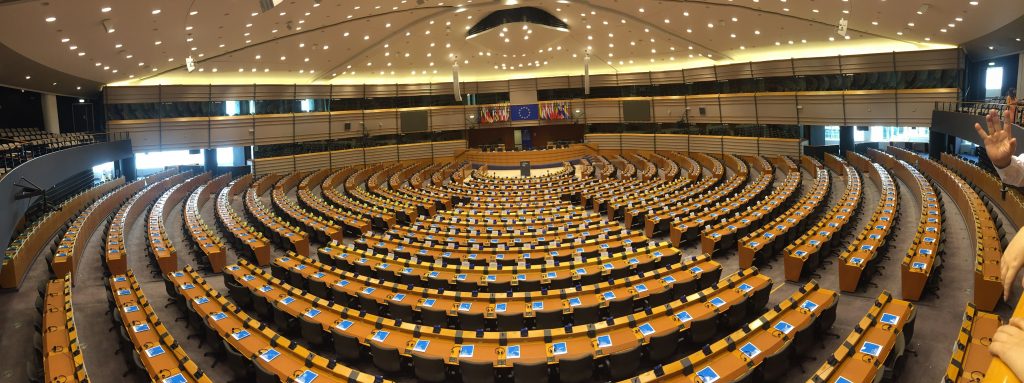Brussels Summer School student Lorenzo Rorro recounts his time spent with us:
I was looking for some summer activities that could provide me with useful experiences and skills that I could later employ, be it academically, professionally or privately. Then I came across the Brussels Summer School. A two weeks’ period experience at the Brussels School of International Studies, the biggest among the centres of our university in mainland Europe. A visit to EU buildings e.g. the Parlamentarium, and the European Parliament, at the heart of EU member states affairs and arguably one of the most influential trading actor worldwide. A trip to World War 1 battlefields, one of the bloodiest wars humanity has ever seen. A handful of full scholarships covering all the tuition fees and accommodation costs, offered to Kent students. And last but not least, a chance to stay and visit Brussels, the federal capital of Belgium, a gorgeous, interested yet politically complicated country squeezed in between France and Germany, where one can easily enjoy the local specialities: chips, waffles, chocolate and especially beer.
So, what was the fella to do? Pass up or seize the opportunity?
Well, surprisingly enough, eventually I decided to take the chance I was offered and indeed I had an amazing time there, for various reasons.
First off, the people I met while there were very sympathetic and intelligent. My group of colleagues was of a very diverse, culturally and geographically, nature. However, the opinions, perspectives and experiences of those of us still studying did not clash, rather they dialogued and oftentimes paired up with the ones held by those already involved in the job market. Needless to say, the time some of us spent together in class was only half the time we dedicated to appreciating crafted beers and losing ourselves in the small streets around the centre.
Secondly, academics and professionals’ eagerness to present us an insight of their areas of expertise. Members of the Brussels School and those of the VUB walked us through the diverse aspects the EU is concerned with, ranging from foreign and security policies, both internally and with neighbouring countries, to trades and environmental treaties. I, personally, welcomed the more philosophical and interactive approach adopted by some scholars, namely Dr Amanda Klekowski von Koppenfels on International and European Migration and Dr Albena Azmanova on Free speech and Refugees, who briefly focus on the data, preferring to deal with the more substantial, argumentative and, I believe, interesting parts of their researches. On the other hand, the professionals, from a wide array of jobs such as policy-makers, MEP, European civil servants, diplomats and EU or UN agencies’ employee, that came to speak were also very competent, and provided us with a better and more practical understanding of what the EU does and how it works daily.
The third reason I am very grateful I took up the opportunity is the visit the EU Parliament and the Parlamentarium. Approaching the EU buildings, the visitor is likely to be impressed by the high glass-made structures surrounding the central square. From there we walked down a short slide and arrived in front of the Parliament. After passing the checks we used the lift to reach the floor where the access to the Hemicycle is. Before visiting the impressive semi-round room, we had a talk with a British civil servant and an MEP, who spoke about his job at the committee he partakes in and how many things, but not the main working language, are likely to change with the Brexit negotiation coming along. Then, he walked us into the Hemicycle, where he pointed at the cubicles where skilled translators work their magic, without which the EU dream could not come true. Our last stop was the Parlamentarium, where the history of the driving motives and the multiple developments undertaken by the EU are kept. This last building, although not as impressive as the Hemicycle, nonetheless seems to work as a witness of the past and the future ambitions of the EU project, as well as the place to go to if ones really wants to understand why the EU exists.
Finally, the field trip in and around Ypres. Led and organised by a nice and chatty old couple of historians, the trip was composed of a visit to the WW1 museum in Ypres, the historic centre of the little town, several monumental cemeteries to those who fought and died during the war and a quick visit to an old trench. This last part was definitely my favourite. Although the passage of time was remarkably visible – can you imagine hearing the screams of teenagers riding roller coasters one hundred years ago, in the middle of the war? – the small shelters and the lines connecting them, along with rusty bullets and barbed wires, and the massive hole created by the WW1 bomb’s explosion were still in place. It did not look like a war battlefield at all, and yet the quiet and shaded spot, with the wrecks of what was once one of the most dangerous places in the Europe, projected a somewhat sinister aura as a remainder of the hurdles and the atrocities of the war period.

